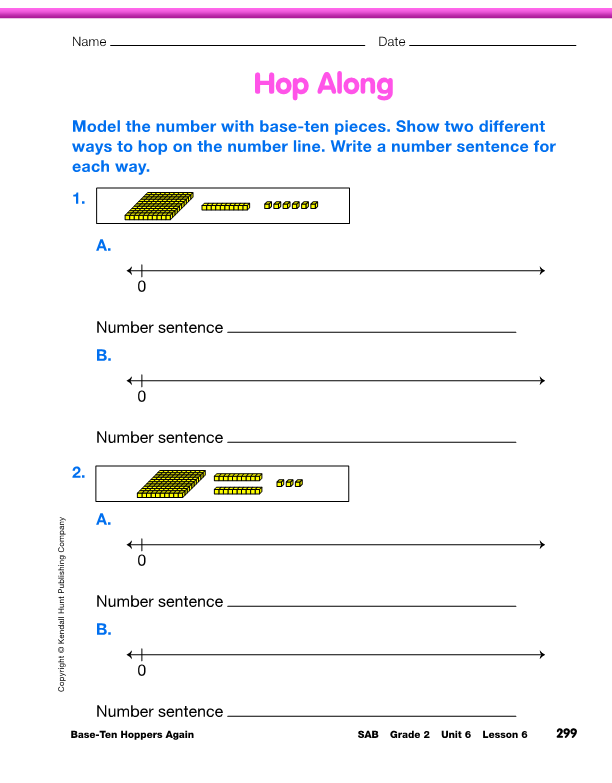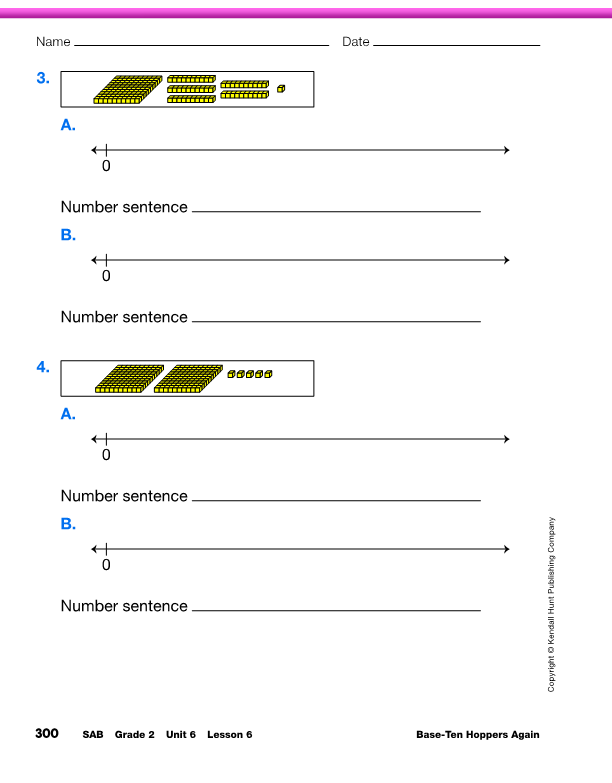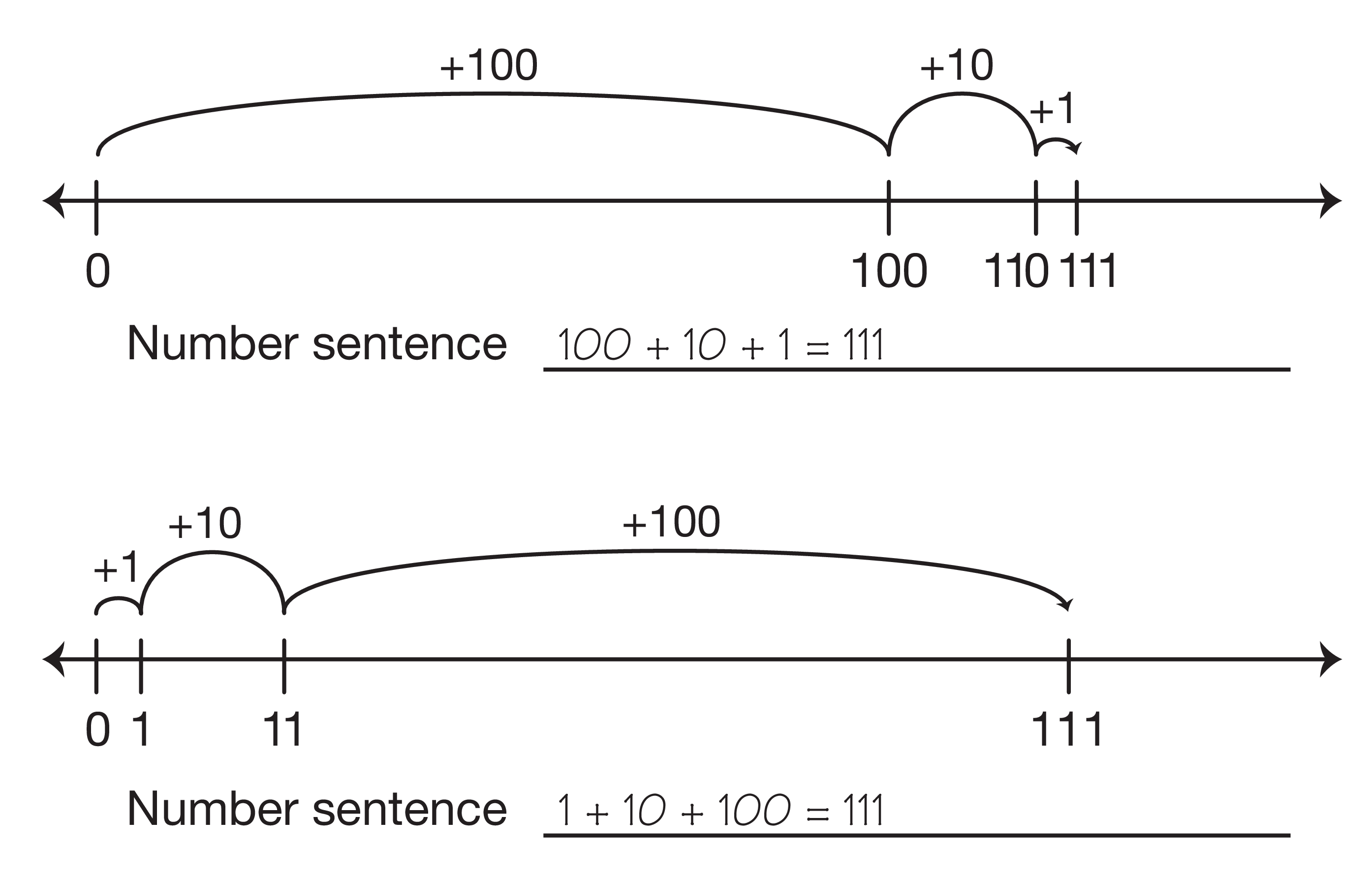Base-Ten Hoppers Again
Est. Class Sessions: 1Developing the Lesson
Review Base-Ten Hoppers.
Hold up a bit, a skinny, and a flat, one at a time. With each piece ask:
Review with students what a base-ten hopper can and cannot do on a number line. Make a list on a display.
Some points students might make:
- The base-ten hopper can only jump by base-ten pieces such as ones, tens, and hundreds.
- The base-ten hopper can move forward and backward.
- The base-ten hopper can start and stop at any number on the number line.
- The number above each hop tells how far the base-ten hopper moved.
- If the hop has a plus (+) sign, the base-ten hopper moved forward.
- If the hop has a minus (–) sign, the base-ten hopper moved backward.
Show a display of the Open Number Lines Master.
Hold up the bit, skinny, and flat all together and ask:
Have students draw the hops starting with different pieces. For example, if the first student draws hops starting with the flat (100 to 110 to 111), ask another student to show the hops starting with the bit, (1 to 11 to 111). See Figure 3. Leave both representations on display and ask students to tell you a number sentence to match each representation.
Hold up the same pieces as before and add another skinny. Ask students what number is represented. Have them draw the base-ten hopper's hops to reach the number (121). Ask a student to draw the hops; then have another student draw it a different way.
Compare Moves on the 200 Chart
and Number Line. Leave both representations up and ask students
to write number sentences. Ask students to show the same number
sentences on a display of the 200 Chart. For example,
100 + 10 + 10 + 1 = 121 is one move from zero to 100, then moving
down two rows to 110 and 120, then to the right 1 space, 121. A
number sentence that matches starting with the bits (1 + 10 + 10 + 100 = 121)
would be shown on the 200 Chart by moving from zero
to 1, then down two rows to 11 and 21, then down 100 or ten rows
to 121. As students make each move on the 200 Chart, ask them how
it is like the number line or the base-ten pieces.
Show students a few more small collections of base-ten pieces and ask them to show the number on the number line with hops of the base-ten hopper. Have them show the hops different ways, that is starting with different pieces, to get to the same number. Ask students to tell you a number sentence for each representation.
Connect Base-Ten Pieces to Hoppers and Number Sentences. Display and direct students to the Hop Along pages in the Student Activity Book. A number expressed in base-ten pieces is given. Students are asked to model the number with base-ten pieces, then show the number on the number line with hops of one, ten, and one hundred. They write number sentences to reflect their work.
Do the first problem with the class as a whole. The first picture shows one flat, one skinny, and 6 bits. One possible representation on the number line, starting with the flat, is to move forward with hops of one hundred, one ten, and six ones. A number sentence that matches is 100 + 10 + 6 = 116. If a student starts with the bits first, the hops are in reverse order and the addends in the number sentence are reversed. See the sample dialog for a discussion of Question 1. Ask students to work with a partner to complete the Hop Along pages.
Upon completion, discuss how the different
representations—base-ten pieces, number line, and number
sentence—are alike and different.
Ask students to reflect on their work and ask open-ended questions such as:




















